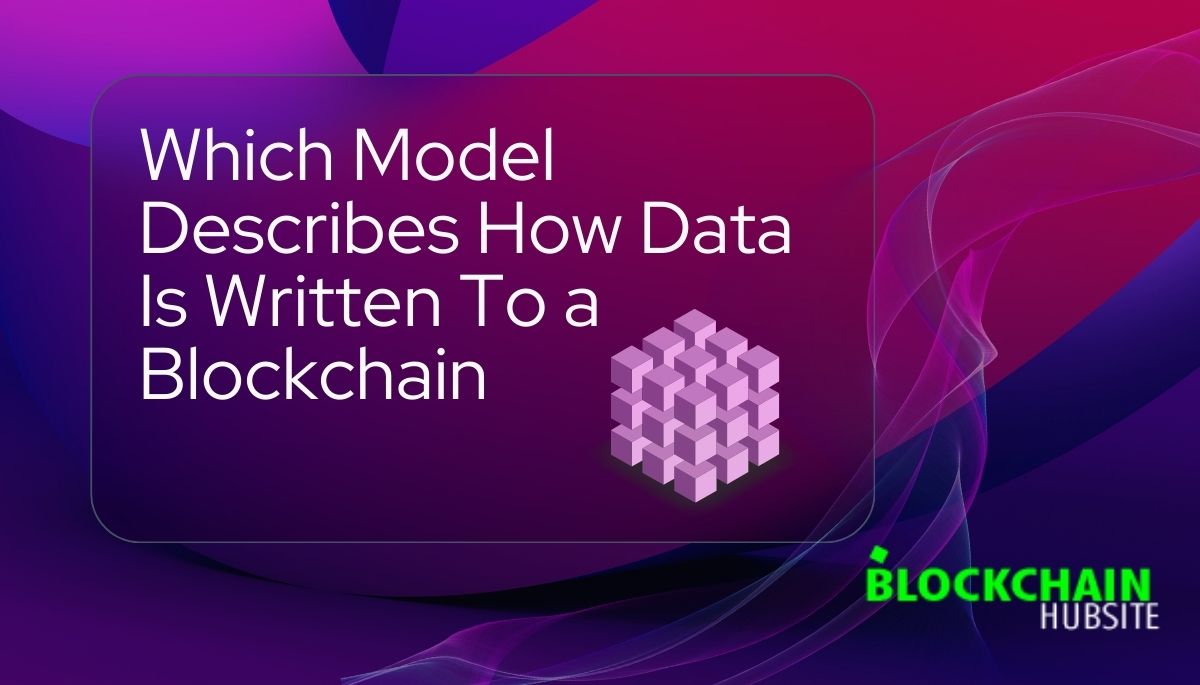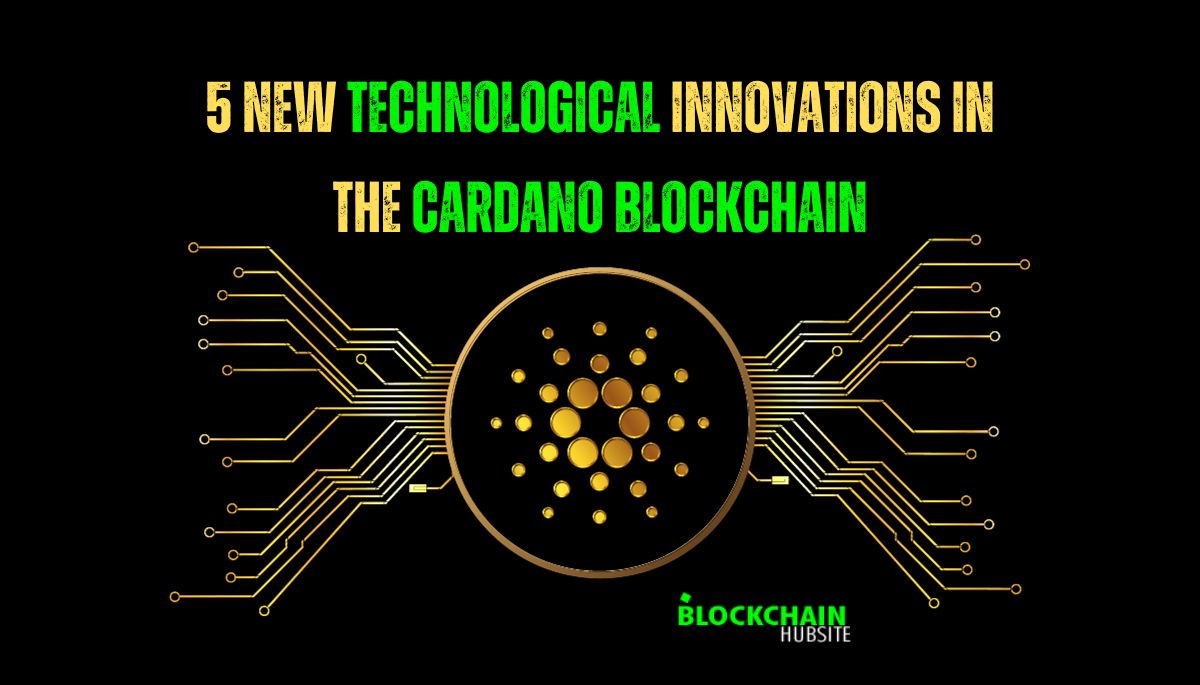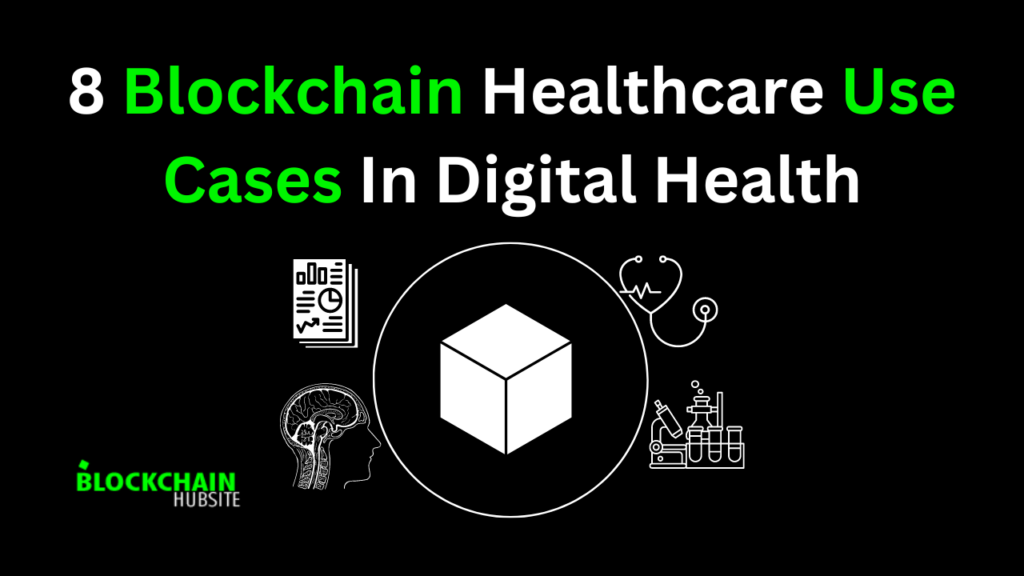
Table of Contents
Introduction
Blockchain technology emerged as a novel method of recording and sharing data across decentralized networks. Fundamentally, a blockchain is a distributed ledger that offers decentralization, security, and transparency thanks to its unique architecture. As blockchain usage increases throughout finance, healthcare, supply chain, and other industries, it’s critical to grasp the technical aspects of how this game-changing technology writes new data to its ledger.
In this article, we’ll take a closer look at the underlying technology of blockchains and how they work to decentralize the recording of transactions and other data. We’ll look at how cryptographic hashes help to connect blocks and how consensus techniques like proof-of-work and proof-of-stake help networks validate new data. Creating new blocks via mining or validation is crucial to blockchains’ ability to provide tamper-proof data stores.
This blog post will provide essential insights for developers building decentralized applications and businesses considering blockchain integration by demystifying the fundamental mechanics of data writing on a blockchain. Suppose we want to take advantage of blockchain technology’s revolutionary immutable, verifiable, and decentralized data storage capabilities to their fullest. In that case, we need to have a firm understanding of these essential fundamentals.
Which Model Describes How Data is Written to a Blockchain
The Anatomy of Blockchain Data Storage

Blockchain technology’s strength and promise come from its central component, a globally distributed ledger. But how exactly does a blockchain record and preserve data securely and decentralized?
The foundation of the blockchain is its structure, a sequential list of blocks that include data entries or batches of transactions. Securely connecting these blocks is achieved through the use of advanced cryptographic algorithms.
There are several critical processes involved in adding new data to this chain:
Peer-to-peer networks propagate transactions verified by validators or miner nodes using consensus criteria. After that, valid transactions are grouped into potential blocks.
Miners compete to add these blocks to the chain by performing computing work in proof-of-work systems or voting with staked tokens in proof-of-stake systems.
An immutable sequence is maintained when each new block refers to the hash of the block before it. To permanently link transactions to a specific moment, blocks also include timestamps.
The global network ensures that all nodes can synchronize their ledgers by rapidly propagating blocks whenever they are added. As more recent blocks are added, more security is created.
Optimization of verification and storage is achieved within each block using Merkle trees, which arrange and summarize transaction data. Each full node is responsible for maintaining the complete blockchain history.
Finally, a revolutionary method for transparent, immutable record-keeping is achieved via blockchain data storage through advanced data structures, cryptographic proofs, and decentralized consensus.
Validating Transactions Through Network Consensus

Transaction validation is crucial before data can be permanently written to the distributed blockchain ledger. When a blockchain participant initiates a transaction, the network nodes perform several checks to validate the transaction before reaching a consensus.
Nodes will verify the transaction’s format and data structure to ensure protocol compliance. More importantly, they check that the sender has enough funds to cover the transaction amount, preventing double-spending on assets they may have already transferred elsewhere. This validation process helps maintain the integrity of the blockchain system.
Blockchain networks use consensus mechanisms like proof-of-work (PoW) or proof-of-stake (PoS) to agree on which transactions are valid. In PoW systems, miners expend computational power to solve complex cryptographic puzzles and propose new blocks. This process is called mining.
By making block creation competitively difficult, PoW consensus spreads decision-making across the decentralized network and makes the ledger hard to manipulate. The first miner to present a valid solution is rewarded with newly minted cryptocurrency.
In PoS models, validators stake existing coins to obtain the right to validate transactions and create new blocks. Their voting power is proportional to their stake. PoS enables popular blockchain networks to be more energy efficient.
Regardless of the consensus algorithm, the goal is to facilitate agreement on block order and transaction validity in a decentralized way across all nodes.
Cryptographic Block Creation: Hashes and Signatures

Once transactions are validated, they are bundled into blocks by miners or validators. In addition to transaction data, each block contains a unique cryptographic hash. This block hash is generated by hash functions that take arbitrary input data and deterministically produce a fixed-length alphanumeric string output.
Even tiny changes in the input data drastically alter the hash output. Chaining these hashes together chronologically creates a permanent, tamper-evident data record written to the ledger.
Blockchain transactions also utilize digital signatures based on public-key cryptography to prove a sender’s identity. The use of private and public keys allows participants to sign transactions in a secure way that ensures integrity electronically. When paired with the immutability of blockchain hashes, this provides a robust system for recording immutable records through decentralized consensus.
Combining digital signatures, hashing algorithms, and consensus rules enables blockchains to achieve transparent and permanent data storage without centralized control. Understanding these technical foundations unlocks the full potential of blockchain technology across industries.
Merkle Tree Magic: Data Organization in Blockchains
Blockchains leverage an elegant data structure known as a Merkle tree to store transactions and validate block integrity efficiently. Merkle trees improve performance by allowing nodes to verify whether a specific transaction is included in a block without downloading the entire block.
Each Merkle tree consists of a root hash representing the combined hash of all transactions in the block. This root hash is calculated by repeatedly pairwise hashing groups of transactions up the tree, ultimately consolidating them into one hash.
Leaf nodes at the base contain individual transaction hashes. Parent nodes further up the tree contain hashes of the two child nodes below – this links transactions through cryptographic proofs. The root node hash summarizes the entire tree.
By comparing the root hash to the overall block hash stored in the blockchain, nodes can verify that a given transaction belongs to that block. The tree structure allows efficient subtree hashing to generate these proofs.
For arranging and verifying blockchain data, Merkle trees offer a sophisticated optimization. They simplify the decentralization network’s verification process and reduce the block storage burden by abstracting away most individual transactions. Understanding Merkle trees is essential for understanding efficient blockchain design.
The combination of Merkle trees, digital signatures, hashing, and consensus makes blockchains a breakthrough technology for immutable and transparent data storage without centralized trust.
Verifying and Chaining Blocks to Maintain Ledger Consistency

Once miners form a new block, it must be confirmed and appended to the existing blockchain to maintain the overall ledger’s integrity. This crucial process involves timestamping and chaining the new block with previous blocks through cryptographic links.
Each block contains the hash of the preceding block. This produces a chain of chronologically ordered hashes returning to the blockchain’s genesis block. Attempting to alter any single block would require recreating all subsequent block hashes, making the ledger virtually immutable.
Blocks also contain a timestamp indicating when they were added to the chain. Timestamping blocks in a decentralized way helps establish chronological order and an undisputed transaction record.
The new block is confirmed once a consensus of nodes verifies it and adds it to their blockchain version. Additional blocks mined over a given block make it exponentially more immutable over time.
By chaining blocks together with cryptographic proofs and timestamping their addition, blockchains can resist tampering and maintain a transparent ledger of transactions or data that is both permanent and decentralized. This reliability and transparency level makes blockchain technology potentially transformative across industries.
The Smart Contract Revolution: Programmable Blockchain Transactions

A key feature of many blockchain platforms is the ability to create smart contracts – programmatic transaction protocols that execute automatically when predefined conditions are met. This enables blockchains to support far more than just transfers of cryptocurrency.
Smart contracts are coded in programming languages like Solidity and embedded on blockchain networks like Ethereum. They encode complex business logic and rules into auditable software. For example, a smart contract could be programmed to release payment to a supplier only when a shipment is scanned to have reached its destination.
The ability to add conditions, make decisions, store data, and move assets based on immutable program logic makes smart contracts a game changer. Instead of relying on human intermediaries, agreements between parties can be enforced automatically through code.
Some ways smart contracts are being used include:
- Managing supply chains and logistics
- Operating decentralized exchanges
- Creating tokenized assets and collectibles
- Encoding credit and lending terms into debt instruments
- Automating legal agreements like property transfers
Smart contract transactions are packaged into blocks and recorded on the blockchain like regular transactions. Miners validate and execute the contract logic, updating the blockchain state. This enables complex workflows without centralized control.
Smart contract capabilities greatly expand the utility beyond simple transactions by bringing programmability to blockchains. Developers can build decentralized applications directly interacting with blockchain-based business processes and agreements. Smart contracts will be integral to unlocking industry transformation as blockchains continue maturing.
Synchronizing Globally Distributed Blockchain Ledgers

For blockchains to function as globally consistent ledgers of transactions and data, the thousands of nodes in decentralized networks must maintain synchronized versions of the blockchain. This is achieved through built-in synchronization methods.
It begins with establishing consensus on the validity of transactions before they are bundled into candidate blocks. Nodes agree on the transactions to confirm through mechanisms like proof-of-work.
Miners then compete to package transactions into blocks and append them to the existing blockchain. Each block contains a cryptographic hash pointer to the previous block, creating an immutable chain.
Once a new block is added, the updated blockchain is broadcast across the peer-to-peer network so all nodes can update their ledgers. Block propagation and verification progress until global consensus is reached.
Merkle trees optimize block data storage and synchronization. This allows compact verification of included transactions. Nodes can also synchronize by downloading block headers first before completing block data.
Consensus rules, data structures, and propagation mechanics work together to allow thousands of nodes to keep exact duplicates of the decentralized blockchain ledger. This is the key to achieving a singular immutable transaction record not controlled by any individual party.
Developers can build blockchain applications that seamlessly interact with globally consistent decentralized data by understanding the technical components enabling ledger synchronization. The ability to coordinate records across untrusted parties makes blockchain technology so powerful.
Immutable and Unalterable Records

A defining feature of blockchain technology is the concept of immutable record-keeping. Once data is confirmed and recorded on a blockchain ledger, it becomes practically impossible to modify, remove, or tamper with it. This confers significant advantages:
- Trust – Blockchain immutability assures that data is valid and unaltered over time. This builds confidence for businesses and users.
- Auditability – Stakeholders can easily verify the historical state of blockchain records back to their origins. The permanence of data aids transparency.
- Security – Unauthorized changes to vital records like financial transactions or medical data could prove disastrous. Immutability acts as a safeguard.
Several blockchain architecture properties enable immutability:
- Distributed ledgers – Blockchains spread identical records across countless decentralized nodes. Altering data requires near-unanimous collusion.
- Cryptographic hashes – Each block contains a hash pointer to previous blocks. This mathematically secures the chronological order of data.
- Consensus rules – Mechanisms like proof-of-work ensure global agreement on the state of the blockchain among participants.
- Data structures – Merkle trees allow efficient verification that transactions belong to blocks.
The longer a particular record has been part of the accepted blockchain, the more computationally prohibitive it becomes to alter its position or content. This represents a significant advancement in record-keeping and coordination across groups that may not trust each other. Understanding blockchain immutability unlocks game-changing applications across industries.
Timestamps and Consensus: Verifying Blockchain Blocks
After a blockchain miner successfully creates a new block, additional steps are required to verify the block and add it to the existing chain. This verification process involves timestamping and chaining the new block with previous blocks.
Each block contains a timestamp indicating when it was mined. Since blocks are decentralized across the peer-to-peer network, their timestamps provide an undisputed record of the time transactions occurred.
The new block also references the preceding block’s hash. Linking blocks in this cryptographic, chronological chain ensures that transactions are immutable once sufficiently buried under newer blocks.
After a miner proposes a new block, a consensus of nodes must verify and add it to their blockchain copies. This decentralized verification is vital to achieving network-wide acceptance of the new block and its data.
By cryptographically chaining and timestamping new blocks, blockchains can establish an authoritative transaction timeline while maintaining integrity across all ledgers.
Ensuring Data Privacy and Security on Blockchains

In addition to making data tamper-evident through immutability, blockchains also provide vital security and protection for transaction information:
- Encryption via cryptographic hashing and digital signatures ensures data remains private and authentic.
- Decentralization across thousands of nodes prevents centralized points of failure.
- Consensus mechanisms promote agreement on data validity across the network.
- Advanced accountability methods like zero-knowledge proofs allow anonymous but verifiable transactions.
- Formal verification techniques can prove code correctness in smart contracts.
- Optional use of permissions restricts access and visibility where needed.
- Hashing and data structuring optimize data integrity checks.
By combining immutability with multilayered data security protocols, blockchains represent a powerful approach to managing sensitive records and digital assets. The transparency and append-only nature of blockchains also aid in cybersecurity and auditing.
Conclusion
Blockchain technology represents a landmark advancement in data storage and coordination by enabling decentralized, transparent, and tamper-proof record-keeping. Throughout this article, we’ve looked at how a distributed ledger works and how many ingenious technologies let users permanently record and validate transactions.
Consensus algorithms enable agreement on the validity of transactions without centralized control. Cryptographic proofs securely link blocks together in an immutable timeline. Timestamping and digital signatures provide further integrity. Data structures like Merkle trees optimize storage and verification. The system grows more secure over time.
Smart contracts expand blockchain capabilities further by encoding complex agreements into autonomous software. These technical foundations enable groundbreaking applications for finance, supply chains, healthcare, and beyond.
However, as blockchain adoption spreads, work remains to improve scalability, privacy, and energy efficiency. Ongoing research on consensus rules, layer-two scaling, and blockchain interoperability aims to address these challenges.
By demystifying the inner workings of blockchain data storage, this blog post aimed to build essential literacy regarding an invention that promises to transform record-keeping across industries. Mastering these core technical concepts will be key as decentralized ledger technology ushers in a new paradigm for transactions, contracts, and coordination.




